A conducting bar of length L is free to slide on two parallel conducting rails as shown in the figure

Two resistors R1andR2 are connected across the ends of the rails. There is a uniform magnetic field →B pointing into the page. An external agent pulls the bar to the left at a constant speed v.
The correct statement about the directions of induced currentsI1andl2 flowing through R1 and R2 respectively is:
Both I1andI2 are in anticlockwise direction
I1 is in anticlockwise direction and I2 is in clockwise direction
Both I1andI2 are in clockwise direction
I1 is in clockwise direction and I2 is in anticlockwise direction
Step by step video & image solution for A conducting bar of length L is free to slide on two parallel conducting rails as shown in the figure Two resistors R_(1) and R_(2) are connected across the ends of the rails. There is a uniform magnetic field vecB pointing into the page. An external agent pulls the bar to the left at a constant speed v. The correct statement about the directions of induced currents I_(1) and l_(2) flowing through R_(1) and R_(2) respectively is: by Physics experts to help you in doubts & scoring excellent marks in Class 12 exams.
Updated on:21/07/2023Topper's Solved these Questions
- JEE MAIN 2021BOOK - JEE MAINS PREVIOUS YEARCHAPTER - JEE MAIN 2021EXERCISE - PHYSICS (SECTION B)
30 Videos
- JEE MAIN 2021BOOK - JEE MAINS PREVIOUS YEARCHAPTER - JEE MAIN 2021EXERCISE - PHYSICS SECTION A
60 Videos
- JEE MAIN 2021BOOK - JEE MAINS PREVIOUS YEARCHAPTER - JEE MAIN 2021EXERCISE - (SECTION - B)
10 Videos
- JEE MAINBOOK - JEE MAINS PREVIOUS YEARCHAPTER - JEE MAINEXERCISE - All Questions
473 Videos
- JEE MAIN 2022BOOK - JEE MAINS PREVIOUS YEARCHAPTER - JEE MAIN 2022EXERCISE - Question
492 Videos
Similar Questions
A conducting bar is slid at a constant velocity v along two conducting rods. The rods ar seprated by a distance l and connected across a resistor R. The entire apparatus is placed in an external magnetic field B directed into the page
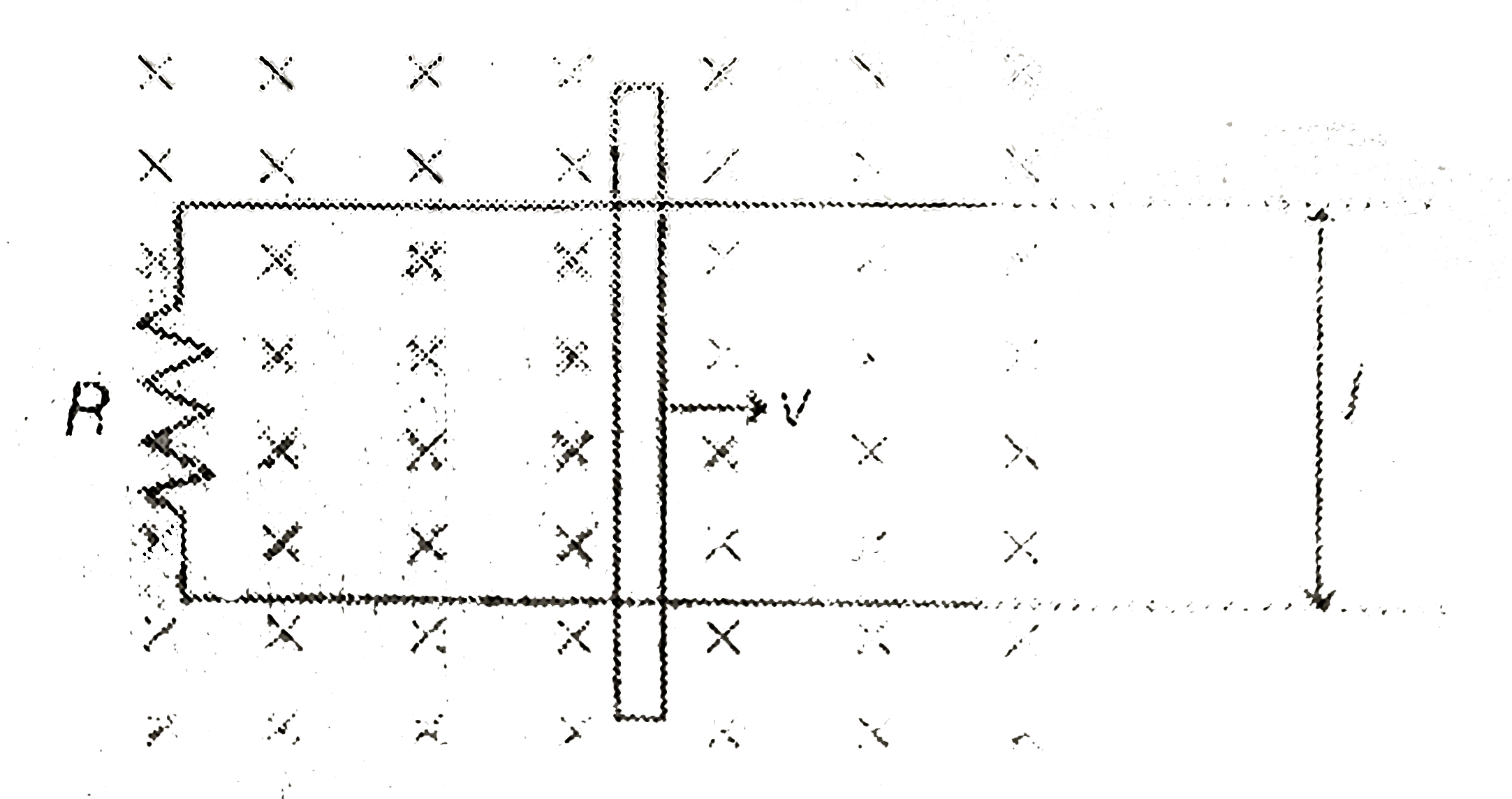
The induced current in the above circuit is:
View SolutionA wire cd of length l and mass m is sliding without friction on conducting rails ax and by as shown. The verticle rails are connected to each other with a resistance R between a and b. A uniform magnetic field B is applied perpendicular to the plane abcd such that cd moves with a constant velocity of
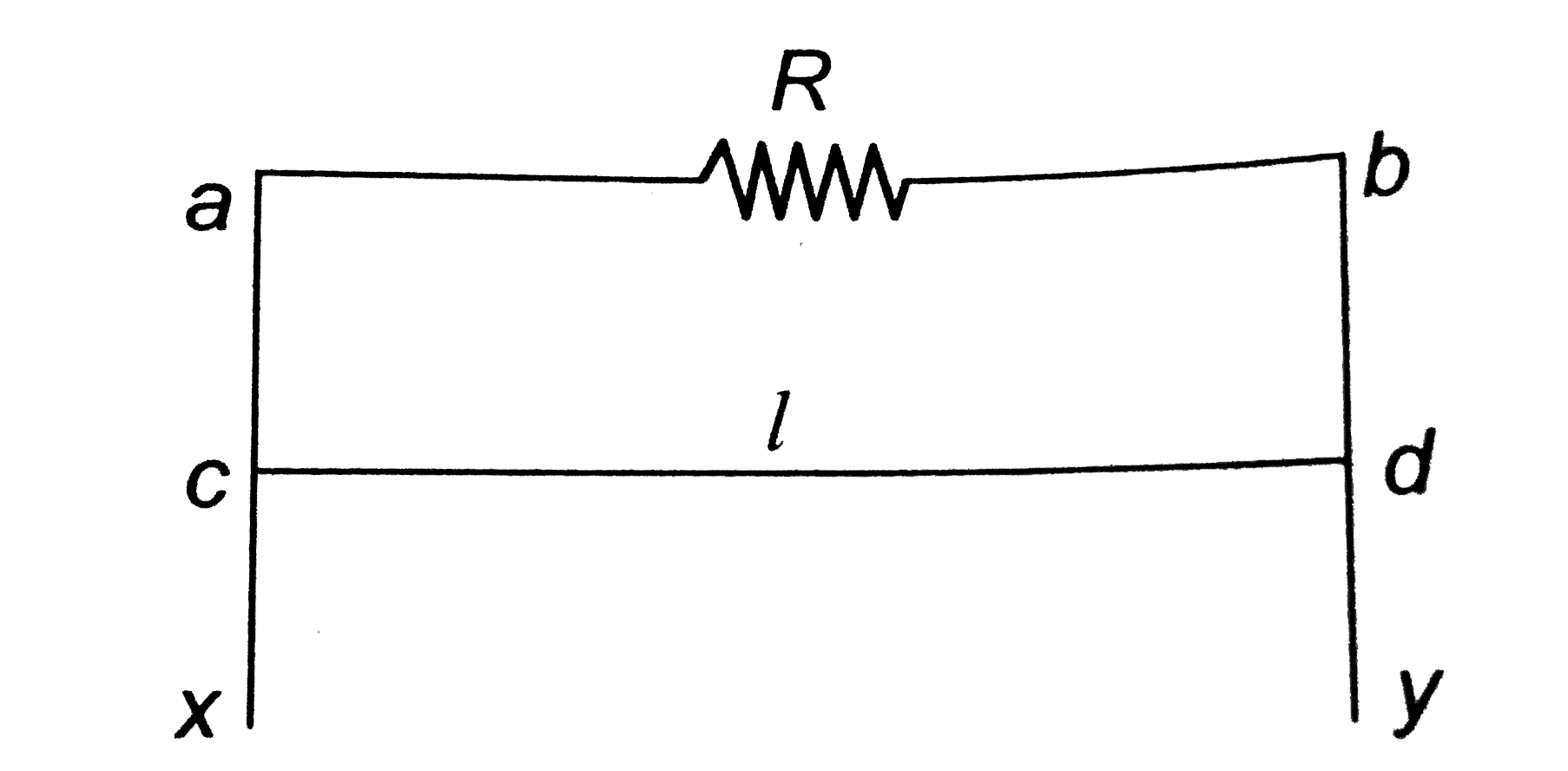
View Solution
Knowledge Check
A conducting rod of mass m and length l is free to move without friction on two parallel long conducting rails, as shown below. There is a resistance R across the rails. In the entire space around, there is a uniform magnetic field B normal to the plane of the rod and rails. The rod is given an impulsive velocity v0-
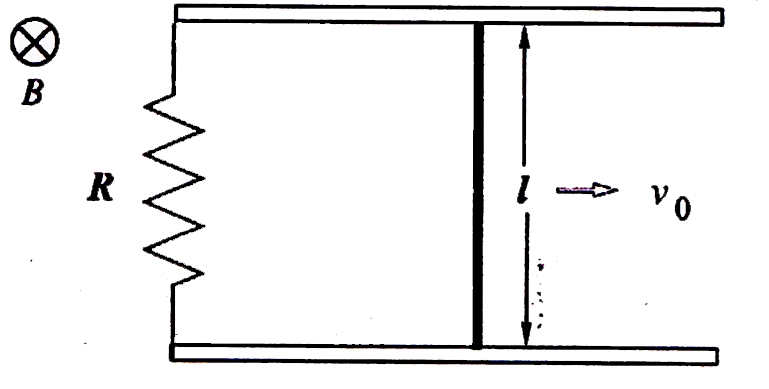
Finally, the initial energy 12mv20AWill be converted fully into heat energy in the resistorBWill enable rod to continue to move with velocity v0 since the rails are frictionlessCWill be converted fully into magnetic energy due to induced currentDWill be converted into the work done against the magnetic fieldA horizontal wire is free to slide on the vertical rails of a conducting frame as shown in figure. The wire has a mass m and length l and the resistance of the circuit is R. If a uniform magnetic field B is directed perpendicular to the frame, the terminal speed of the wire as it falls under the force of gravity is
 AmgRBlBmglBRCB2l2mgRDmgRB2l2
AmgRBlBmglBRCB2l2mgRDmgRB2l2Two idential conductors P and Q are placed on two frictionless rails R and S in a uniform magnetic field directed into the plane. If P is moved in the direction shown in figure with a constant speed, then rod Q
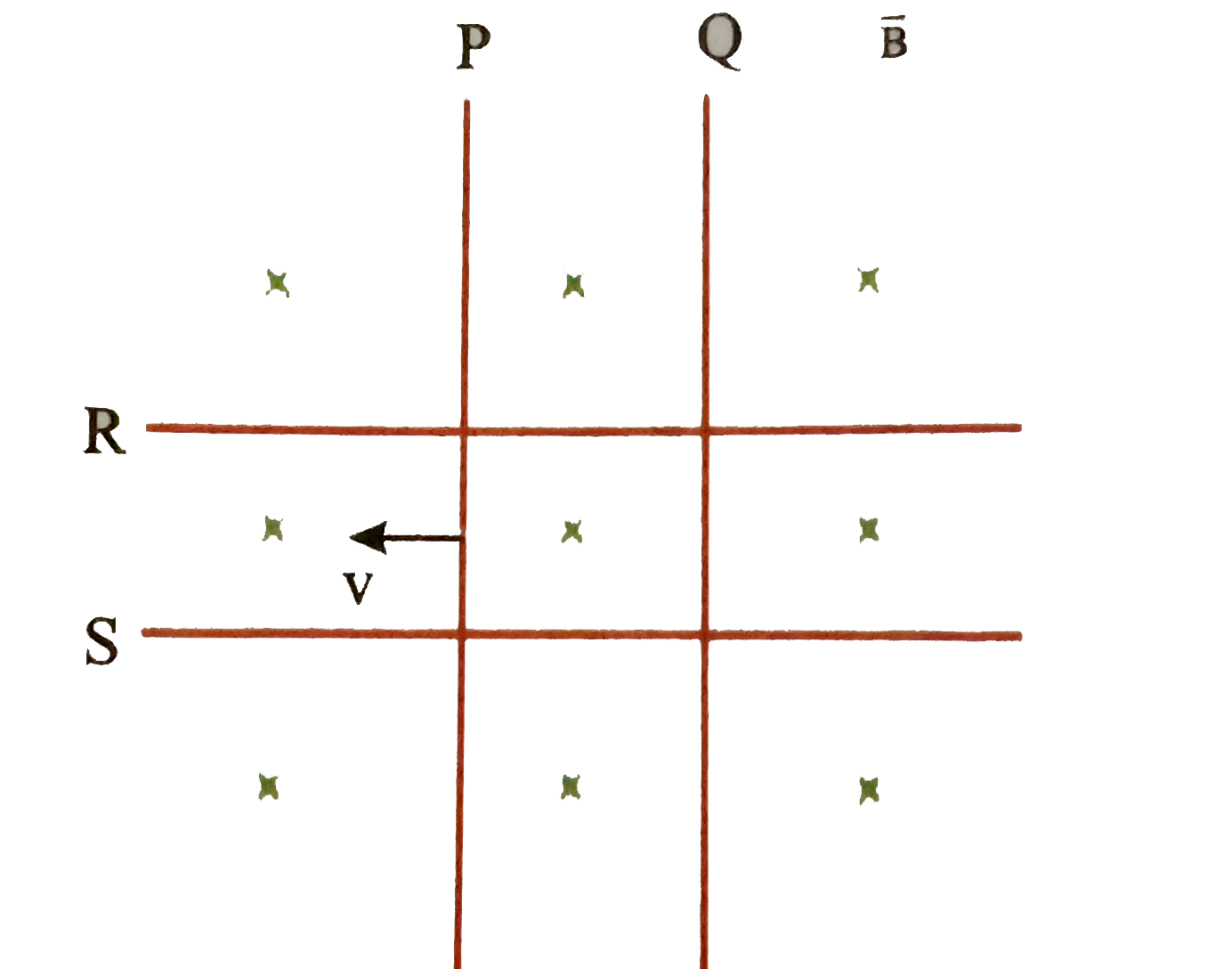 Awill be attracted towards PBwill be repelled away from PCwill remain stationaryDmay be repelled away orattracted towards P
Awill be attracted towards PBwill be repelled away from PCwill remain stationaryDmay be repelled away orattracted towards P

A conducting wire xy of lentgh l and mass m is sliding without friction on vertical conduction rails ab and cd as shown in figure. A uniform magnetic field B exists perpendicular to the plane of the rails, x moves with a constant velocity of
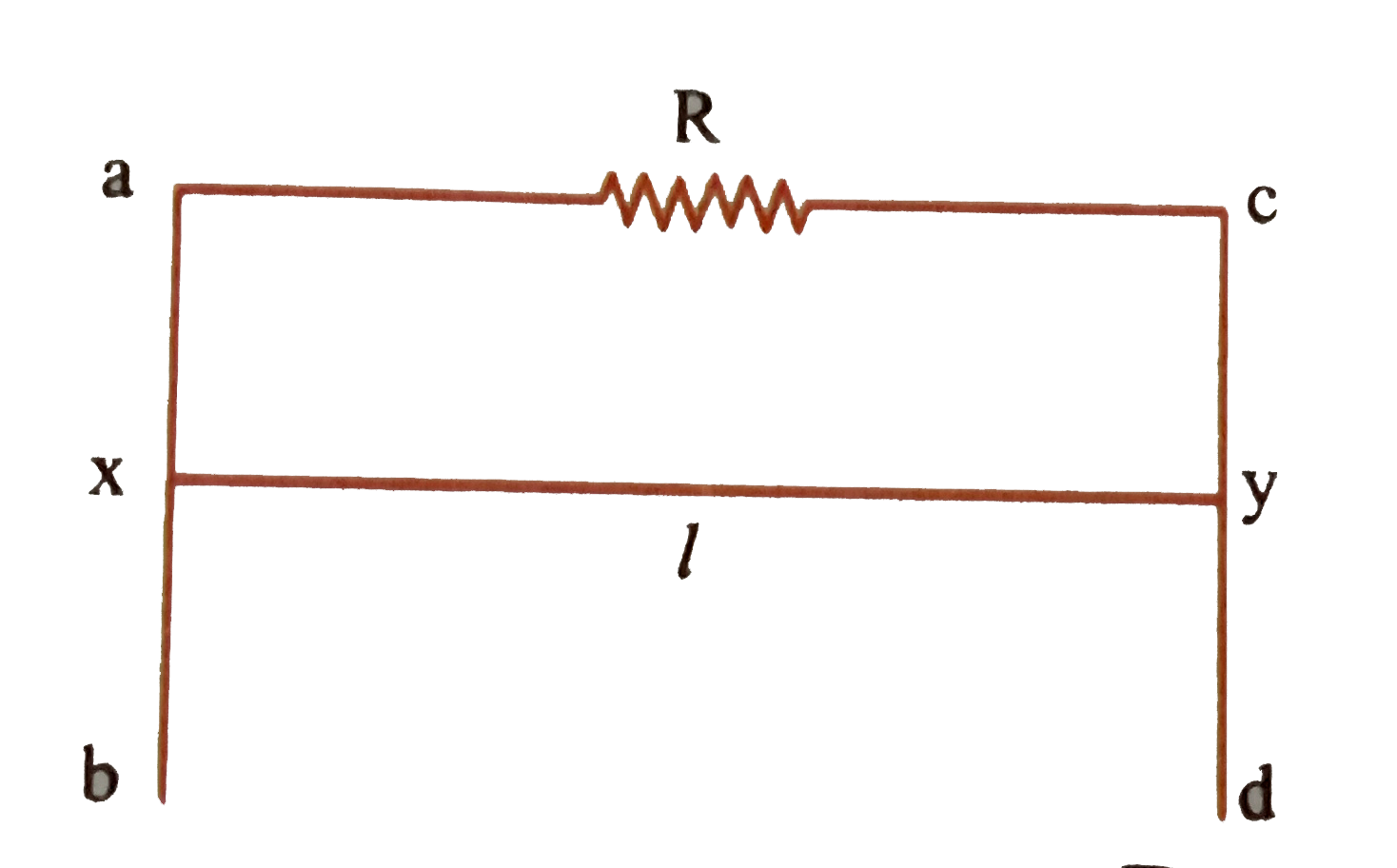
View SolutionFigure shows a wire sliding on two parallel, conducting rails placed at a separation L . A magnetic field B exists in a direction perpendicular to the plane of the rails. What force is necessary to keep the wire moving at a constant velocity V ?
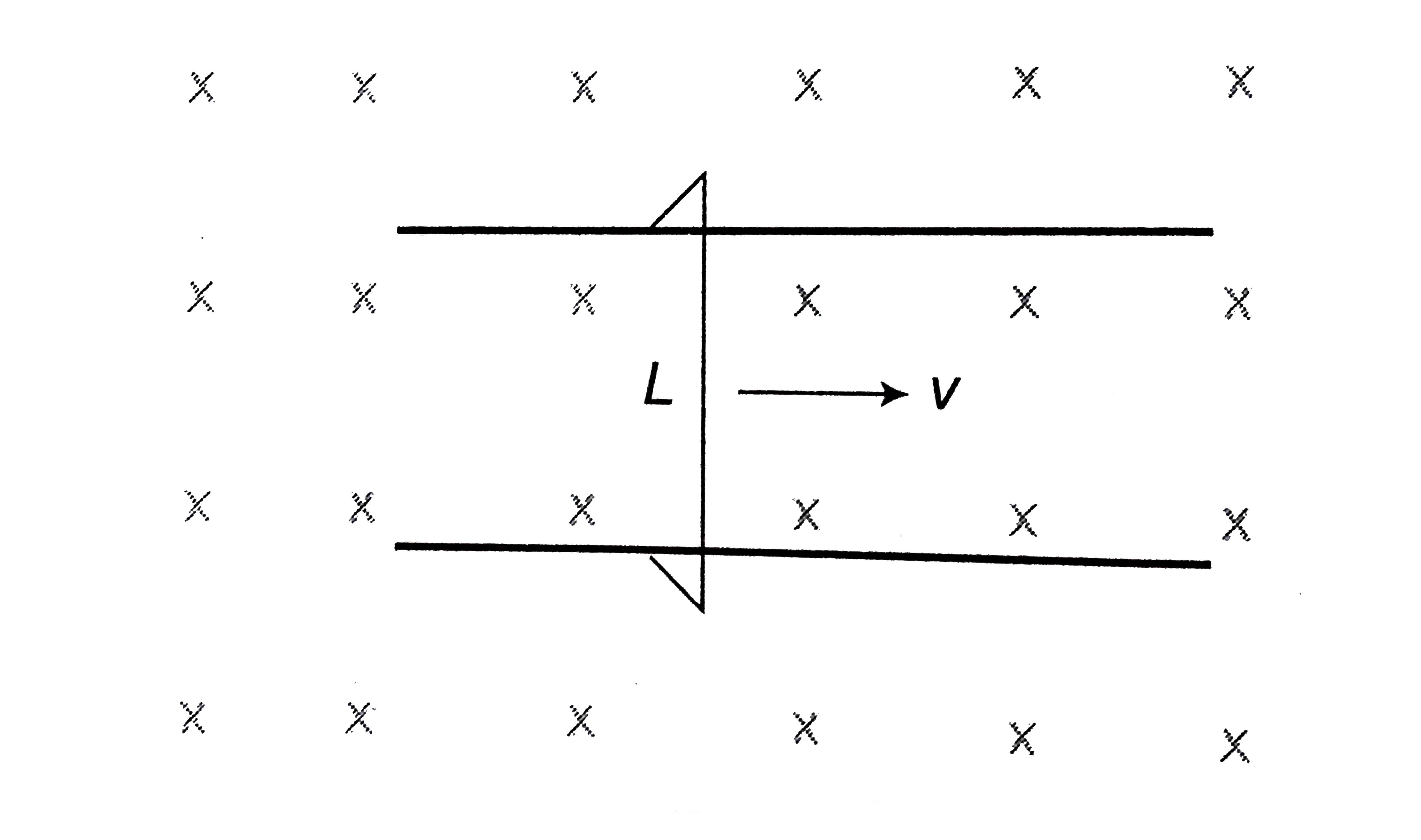
View SolutionA constant force is being applied on a road of length 'l' kept at rest on two parallel conducting rails connected at ends by resistance R in uniform magnitic field B shown.

View SolutionA conducting bar is slid at a constant velocity v along two conducting rods. The rods ar seprated by a distance l and connected across a resistor R. The entire apparatus is placed in an external magnetic field B directed into the page
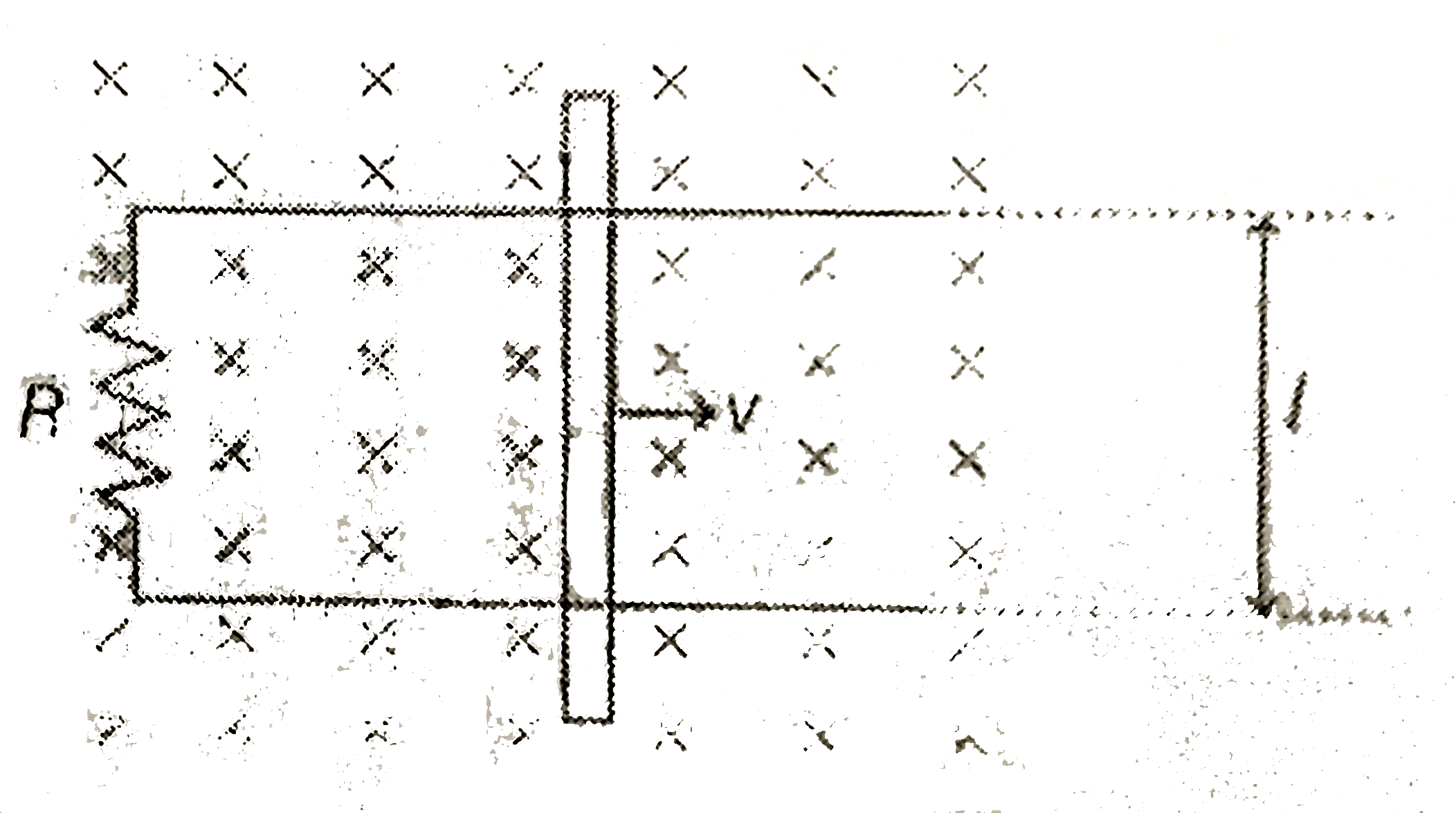
Which of the following represents the current i generated by the apparantus?
View SolutionA conducting bar is slid at a constant velocity v along two conducting rods. The rods ar seprated by a distance l and connected across a resistor R. The entire apparatus is placed in an external magnetic field B directed into the page

An increase in which of the following would NOT increase the current generated by the apparatus?
View Solution
